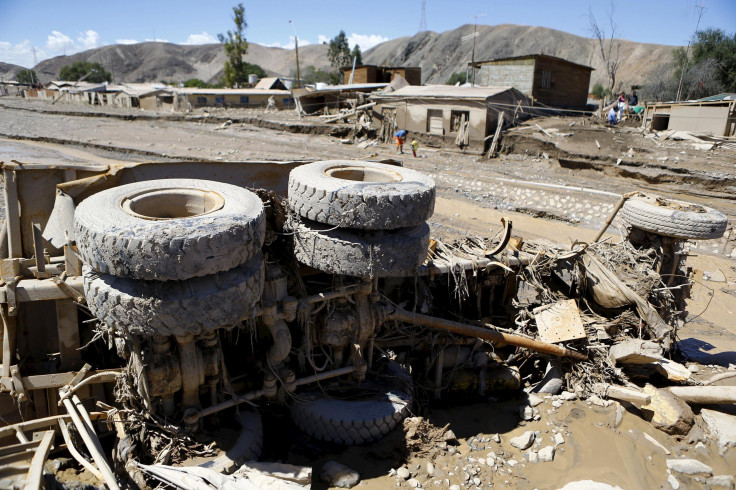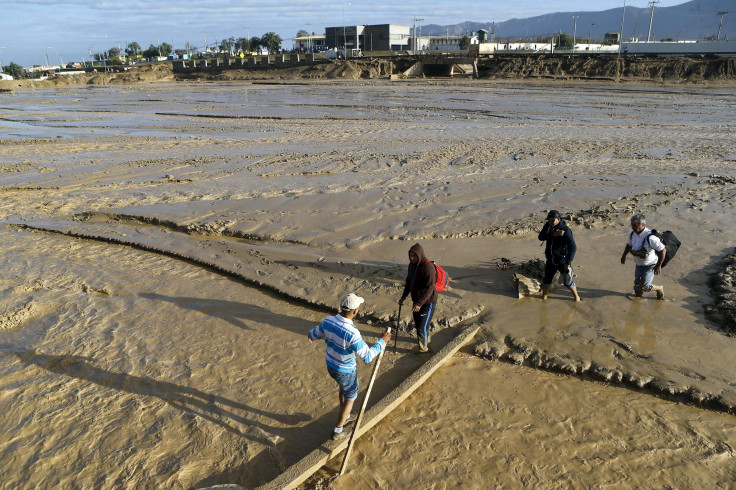Chile Flash Floods: 25 Dead As Rescue Workers Fear For 125 Still Missing And 2,700 Homeless

Chilean emergency rescue workers are increasingly concerned about the fate of 125 people missing after a week of flash floods and mudslides in the Atacama region in the north of the country. At least 25 people are confirmed dead, and another 2,700 are homeless following the devastating floods that affected a total of 30,000 Chileans. The floods, which started on March 25, submerged entire towns and dislodged thousands of tons of dirt. The flooding is the worst the region has seen in 80 years.
President Michelle Bachelet canceled a visit to a regional summit and visited the area on Saturday to survey the damage, promising more relief on top of what has already been allocated for the emergency response. Her government declared a state of emergency and provided more than 100,000 vaccines for the flu, tetanus and hepatitis A, along with other hygiene supplies and food. They are also building shelters for the homeless.
“We stand with you, as we have from the beginning, and we will rebuild,” Bachelet said Saturday. “It pains me to see my country in such a state. … We will find a solution.”
Experts believe it will take months just for the mud that leveled buildings and destroyed roads to wash away. Health authorities worry that metals from the dozens of mines that dot the region could have contaminated water and soil, which could lead to cases of gastrointestinal diseases, France24 reported.
The flooding was caused by an unusual cold front that hit the Andes mountains and a rise in sea temperatures, dropping rain instead of snow in the mountains, which flowed to the communities below. The region is typically arid and contain's the world's driest desert.
Massive boulders rolled down into towns, lodging themselves in homes along with tons of mud, which eventually hardened. Areas in Peru were also affected by heavy flooding and mudslides. At least eight people were killed and 25 were injured there.
Below are a few photos of the devastation in Atacama from Reuters.



© Copyright IBTimes 2025. All rights reserved.






















